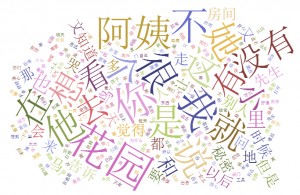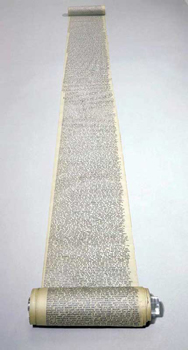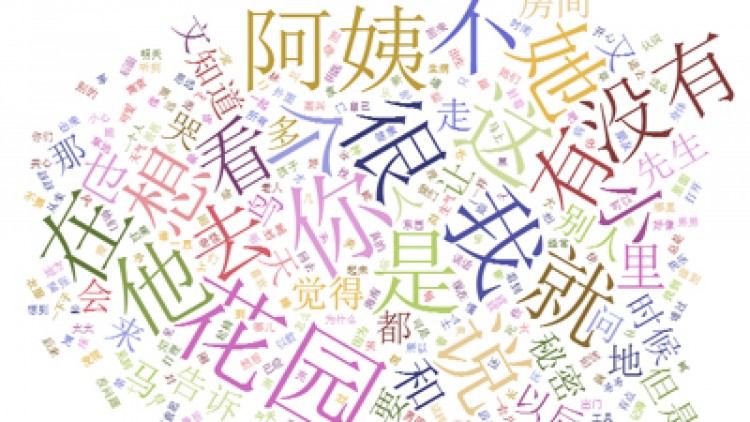I recall the first time I heard the term “graded reader”. I was talking to an English teacher who was an extensive reading evangelist. He went on and on about how graded readers were essential to extensive reading but I scarcely had any idea what he was talking about. Even after it was explained to me, it was some time later that I finally understood exactly what is a graded reader.
Simply put, graded readers are “easy reading” books used to support the extensive reading approach to learning a language. They can be adapted from films, classics, biographies, or they could be original stories. Graded readers are “graded,” or leveled, within a series according to difficulty, based on the words used. Seem like a pretty broad definition? It is, so I’m going to lay out for you the real secrets of a graded reader so that you will know one when you see (or read) one.
Is this book a graded reader?
1. The Language is Selective

This is perhaps the most important feature of a graded reader. The writer of a graded reader attempts to use only words that you, the reader, is most likely to know. The trick is to figure out which words you are likely to know. This question can be best answered using a linguistic technique known as “corpus analysis.” A corpus is a large collection of natural language, spoken and written, which can be analyzed to identify the most commonly used words. For any respectable corpus analysis, a minimum of one million words is essential.
However, when writing books for non-native speakers, one must not only pay attention to the most commonly used words in the language, but also pay attention to words that the learner is most likely to know. Because we often learn from textbooks and in classrooms, it is also important to analyze words that learners are being taught, not just the words that are used in everyday speech. I’m sure every language learner has had the experience of coming across something very simple and common for native speakers that was never taught in class. This happens because the language that natives commonly use and the language that is taught from a book doesn’t always match up perfectly. Therefore, a good graded reader series will analyze both sides to ensure the most optimal words are being used. That’s not to say that new or more difficult words are not used, it’s just that they are selectively used.
2. The Language is Controlled

If you were to talk with a five-year old child, the words that you would use would be much different compared to how you might speak to a college professor. To a child, we would speak in much simpler terms, use simple grammar, and avoid subjects which may be too complex.
For everyone who is learning Chinese, five-year old Chinese kids have a leg up on all of us! How much more important is it then for learners to have the language controlled so we can begin to comprehend it. This means ensuring that we not only pay attention to the words being used, but we also control the grammar that is used, simplify or avoid complex ideas, and be careful about introducing too many new words too quickly. This requires careful writing, reviewing, and editing. Graded readers have been through this rigorous process so that learners at the designated levels are actually able to comfortably read them.
3. The Book is Long Enough

If you are going to learn any language, you will need to see the same words repeated enough times in different contexts before you can remember and know how to use them. Research shows that we need 10-30 or even 50 or more meetings of an average word before it is truly learned. Graded readers must be long enough and provide enough repetition for learning to take place.
For example, if a reader claims to be using approximately 500 characters, it should probably be at a minimum 5,000 characters in length for there to be any significant amount of repetition. Unfortunately, there are some books which call themselves “graded readers” which claim to use a vocabulary of 500 words in multiple stories, each 100-150 words in length. Obviously, as the math shows, if every word was used only once (which would be impossible to do) then it would need to be at least 500 words in length. Basically, the more words used in the book, the longer the book should be in order to provide enough repetition.
What is Not a Graded Reader
To be clear, it’s also important to note what is not a graded reader.
- A collection of short articles
- Kids books
- Text books
- Books/articles intended for learners that pay little to no attention to grading the text
- Short articles in a text book
- Newspaper/magazine articles with dense subject matter
- A story too short to provide enough repetition
All of these materials have their time and place, assuming they are at the proper level for the reader. Have we all come across these? Yes, it’s pretty much inevitable. However, when given a choice, one should choose true graded readers in order to reap the benefits of extensive reading.
For English learners, there are over 3,500 graded readers on the market, but for Mandarin there is only a very small fraction in comparison (less than >1%). Keep your eyes on Mandarin Companion; we’re just getting started!
